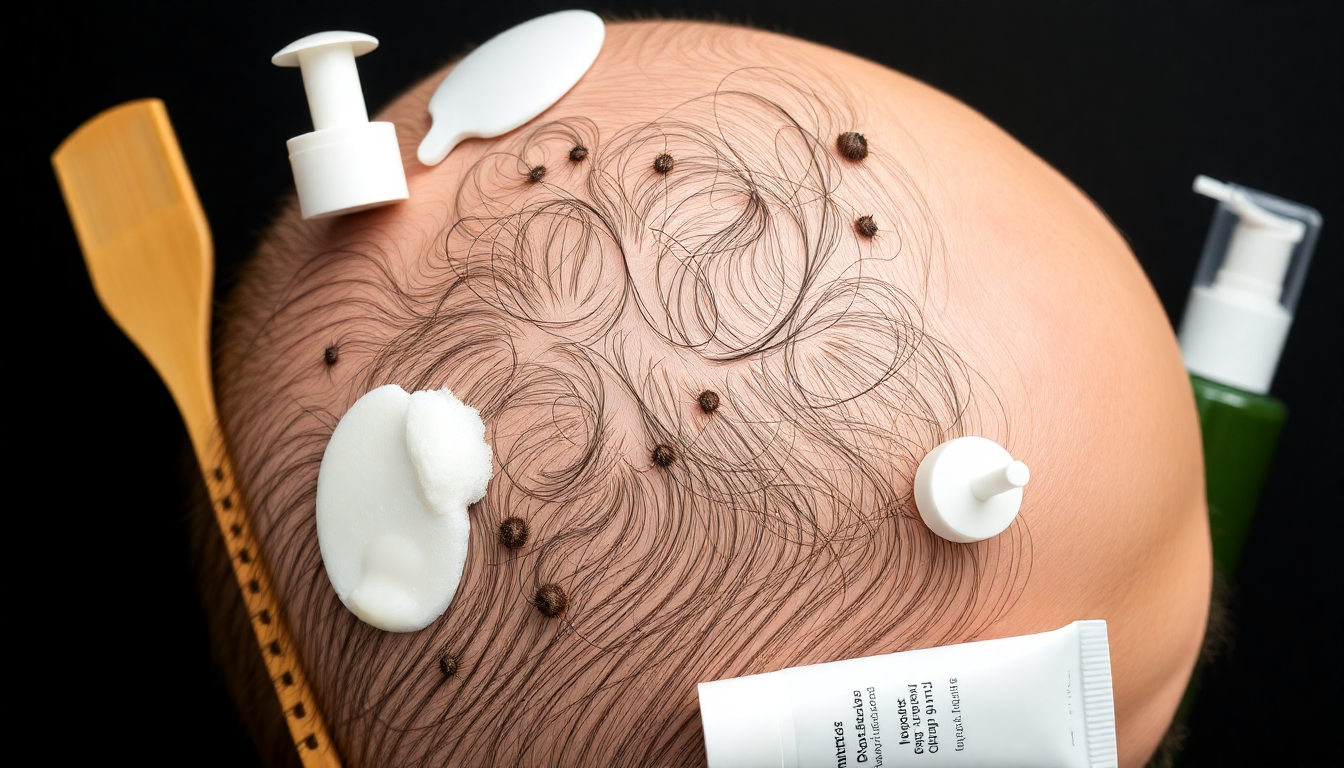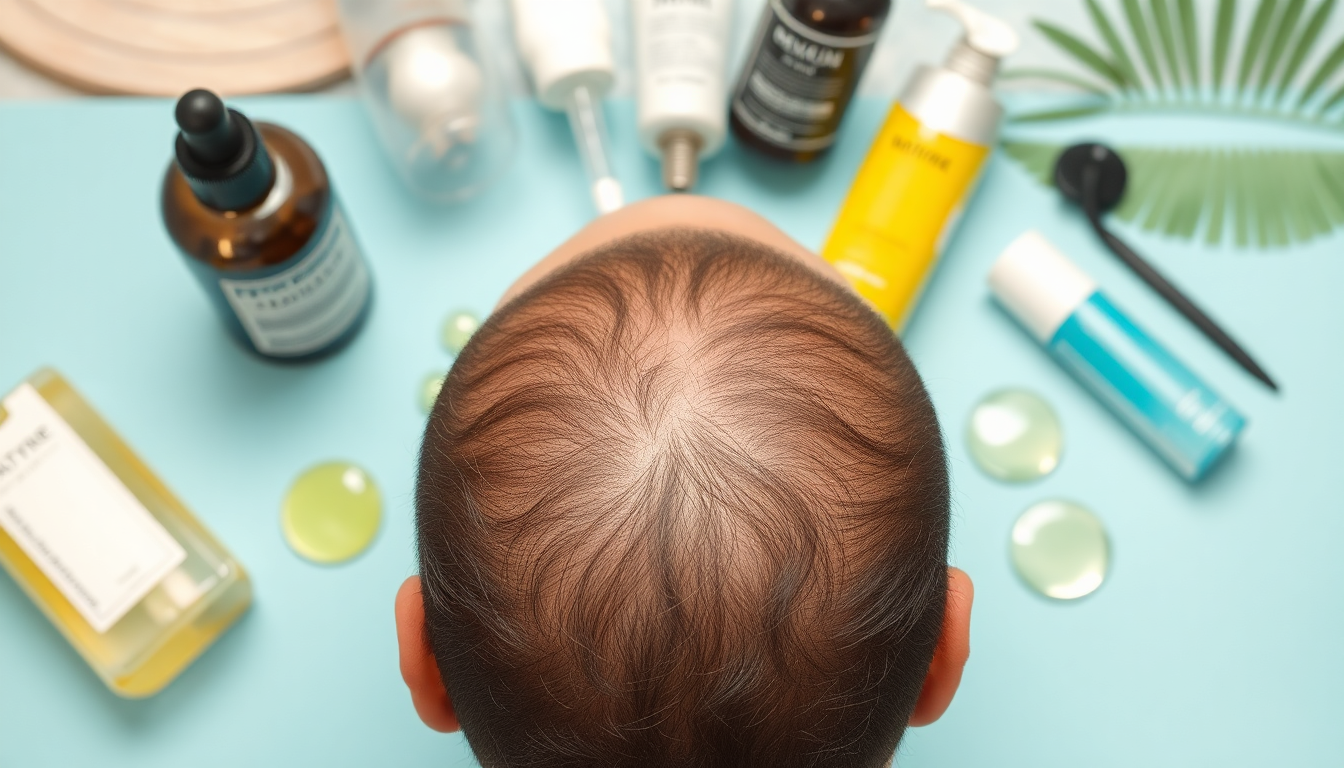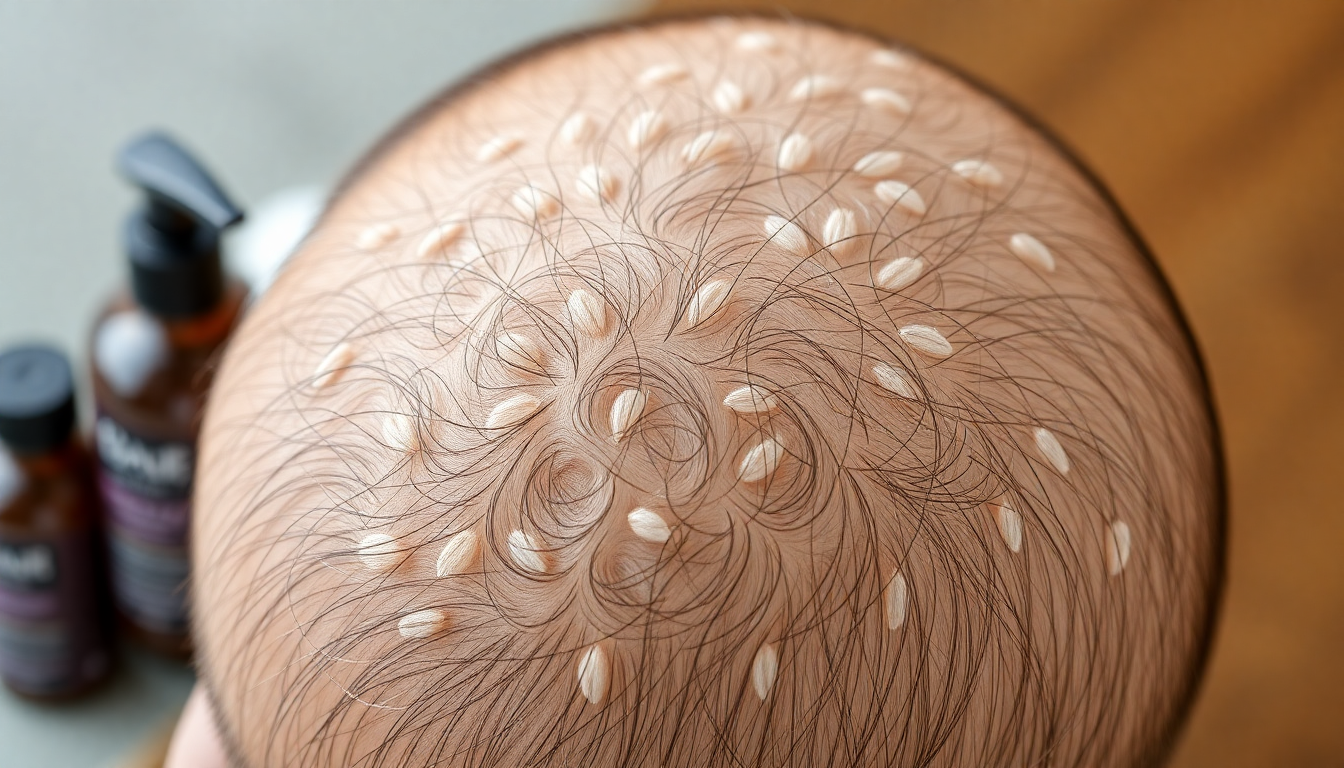Introduction — Start With the Right Triage
Scalp triage is the deliberate process of assessing your scalp's baseline condition, mapping a realistic hair‑density goal, and then selecting the safest, most effective combination of peptide serums, prebiotic scalp treatments, and at‑home devices. In 2025 the market offers powerful actives and tools, but more options mean more room for mismatch — especially if your scalp is sensitive. This guide breaks down the science, provides clear decision paths, and gives practical step‑by‑step protocols you can test at home.
Who This Guide Is For
- Anyone with a sensitive or reactive scalp who wants safer choices.
- People noticing thinning, reduced volume, or wanting to improve shaft strength.
- Users who want a comparative overview of peptides, prebiotics, and devices plus easy routines.
- Readers who prefer evidence‑informed, practical steps rather than marketing claims.
Quick Self‑Assessment: Baseline Questions
- Do you experience itching, burning, or stinging after products? (Yes/No)
- Do you have visible flaking, redness, or scaling? (Yes/No)
- Is hair thinner at temples, crown, or diffusely across the scalp?
- Are you using medical hair treatments (minoxidil, oral meds) or topical steroids?
- How much time and budget can you commit (daily, weekly, devices) for 3–6 months?
Anatomy of the Problem — Why Sensitivity Matters
A healthy scalp barrier and balanced microbiome are prerequisites for tolerating actives and for hair follicle responsiveness. Inflammation, disrupted barrier function, or over‑cleansing can amplify irritation and blunt results. That’s why the triage is sensitivity‑first: calm and balance the scalp microbiome, then introduce peptides and devices progressively.
How Peptide Serums Work (A Closer Look)
- Signaling peptides: Short amino acid chains that can modulate cellular signaling around the follicle, potentially increasing follicle activity and improving shaft quality.
- Copper peptides (GHK‑Cu): Linked to wound healing and collagen support; in hair care they are used for follicle support and improved strength.
- Other peptides: Acetyl tetrapeptide‑3, oligopeptides and biomimetic sequences designed to support extracellular matrix and anchor hair better into the scalp.
- Key practical point: Carrier formulation (alcohol vs water, pH, soothing additives) heavily influences tolerability for sensitive scalps.

What Prebiotic Scalp Treatments Do
Prebiotics feed beneficial microbes, help rebalance the scalp microbiome, reduce inflammatory triggers, and support barrier repair. Ingredients include inulin, fructo‑oligosaccharides (FOS), galacto‑oligosaccharides (GOS) and soothing botanical agents. For sensitive scalps they are often the best first‑line therapy because they reduce reactivity and make subsequent actives more tolerable.

At‑Home Devices — Which Ones and Why They Matter
- LLLT (Low‑Level Light Therapy): Uses red/near‑infrared light to stimulate cellular activity and circulation. Good evidence for improving density when used consistently.
- Microneedling (dermarollers/pens): Creates microchannels to boost topical absorption and elicit wound healing pathways; useful but higher risk for irritation and infection if not done correctly.
- Scalp massagers & mechanical stimulators: Low‑risk, improve blood flow and product distribution; excellent for sensitive scalps.

Comparative Table — Quick Read
- Peptide Serums: Best for shaft strength and gradual density; daily use; tolerability varies.
- Prebiotic Treatments: Best for sensitive/ inflamed scalps and long‑term barrier health; 1–3×/week protocols.
- Devices: Best for accelerating density gains when paired with topicals; LLLT low irritation, microneedling higher risk but higher impact.
Step‑by‑Step Triage Decision Path (Detailed)
-
Step 1 — Patch Test & Photo Baseline
- Take clear photos from multiple angles under consistent lighting (top, front, crown).
- Perform a 48–72 hour patch test behind the ear or on the inner forearm with any new peptide serum or prebiotic product.
-
Step 2 — Prioritize Prebiotic and Low‑Irritant Cleansing
- For reactive scalps begin with prebiotic scalp treatments 1–3×/week and a gentle, sulfate‑free cleanser.
-
Step 3 — Introduce Peptide Serums Slowly
- After 4–6 weeks of prebiotic foundation, add a low‑alcohol, fragrance‑free peptide serum every other night. Increase frequency as tolerated.
-
Step 4 — Add Low‑Risk Devices
- Introduce LLLT or scalp massagers 2–4×/week once the scalp is calm for at least 4 weeks.
-
Step 5 — Consider Microneedling Carefully
- Only for tolerant scalps, performed sterilely, with low needle depth (0.25–0.5 mm) initially, and no active infection or open lesions.
Detailed Protocols — By Sensitivity and Goal
Protocol A: Sensitive Scalp + Improve Overall Scalp Health
- Week 0–6: Prebiotic scalp treatment 2×/week, gentle cleanser in between. Silicone massager 3×/week, 4–5 minutes.
- Week 6–12: Add low‑irritant peptide serum every other night. Continue prebiotic maintenance 1×/week.
- After 12 weeks: If scalp calm, add LLLT 2×/week. Track photos and symptoms.
Protocol B: Tolerant Scalp + Aggressive Density Goal
- Daily peptide serum (higher strength) applied at night after cleansing.
- LLLT sessions 3×/week. Gentle microneedling 0.5 mm 1×/week with sterile technique and topical antiseptic as directed.
- Prebiotic treatment 1×/week to counterbalance any barrier disruption.
Protocol C: Thinning Strands + Reactive Scalp (Balanced Approach)
- Start with prebiotic shampoo/treatment 2×/week and silicone massager daily for 2–3 minutes during washes.
- Add a calming peptide serum (with panthenol, allantoin) nightly after 6 weeks of prebiotic treatment.
- Hold off on microneedling until scalp is stable; introduce LLLT at low frequency (2×/week) after 8–12 weeks as tolerated.
How to Layer Products — Order & Timing
- Cleanse: Use a prebiotic cleanser or sulfate‑free shampoo to remove buildup.
- Device (if using same day): Perform LLLT or microneedling before applying serums. For microneedling, wait for redness to subside before applying more potent actives.
- Apply water‑based peptide or prebiotic serum to damp scalp; gently massage for even distribution.
- Allow 2–5 minutes to absorb; finish with any oil‑based or heavier leave‑in products.
Ingredient Deep Dive: What to Look For on Labels
- Peptides: GHK‑Cu (copper peptide), acetyl tetrapeptide, oligopeptides. Check if the formula lists peptide complexes and if the product is designed for scalp use.
- Soothers: Panthenol, allantoin, bisabolol, oat extract — help tolerance for sensitive scalps.
- Prebiotics: Inulin, FOS, GOS. These are typically listed in the actives or botanical extracts section.
- Carriers & alcohol: Avoid high‑concentration denatured alcohols or propanols that can sting. Look for water/alcohol balance suitable for sensitive skin.
- pH & preservatives: Scalp products usually tolerate pH 4.5–6. If preservatives are needed, look for gentle systems (phenoxyethanol in low concentrations, ethylhexylglycerin) rather than high‑risk ingredients.
Clinical Evidence Summary (Concise & Practical)
- LLLT: Multiple randomized trials show increases in hair count and thickness with consistent use over 16–24 weeks.
- Microneedling: Studies demonstrate improved topical absorption and hair count when combined with growth topicals; sanitation and needle depth strongly affect safety.
- Peptides: Emerging clinical data and in‑vitro studies support peptide benefit for shaft strength and follicle microenvironment; effects are often modest and cumulative.
- Prebiotics and microbiome balance: Growing research suggests that a balanced scalp microbiome reduces inflammatory shedding and improves tolerability to actives.
Safety, Contraindications & Red Flags
- Do not microneedle over active infections, open wounds, psoriasis plaques, or severe eczema.
- If pregnant or breastfeeding, consult a healthcare professional before starting potent actives or devices.
- If you take systemic immunosuppressants or have autoimmune scalp disease, see a dermatologist first.
- Always sanitize devices and follow manufacturer instructions for at‑home microneedling and LLLT devices.
Common Problems & How to Troubleshoot
- New stinging or burning: Stop the product, rinse, and reintroduce gentler formulations. Reassess with a patch test.
- Increased flaking after starting a product: Could be a reaction or an initial shedding phase; pause product and consult a professional if severe.
- Little to no change after 4 months: Reevaluate adherence, apply device+topical combinations strategically, or consult a clinician for scalp biopsy or medical evaluation.
Tracking Progress — Simple Metrics That Work
- Photos: Take high‑resolution photos from the same angles every 4–8 weeks.
- Hair pull test: Gently tug 20 hairs in different regions — normal is 1–5 hairs.
- Density snapshots: Use a small coin or reference marker near thinning area to compare over time.
- Symptom diary: Note itching, burning, flakes and product changes weekly.
Shopping Guide & Budget Tips
- Prioritize a high‑quality prebiotic cleanser and one well‑formulated peptide serum before buying devices.
- Devices are a longer‑term investment — start with a silicone massager or travel‑size LLLT comb before committing to larger caps.
- Shop brands that provide ingredient transparency and third‑party testing where possible.
For ready‑made, sensitivity‑focused options, check curated lines such as Eelhoe that offer prebiotic scalp treatments and peptide serums tailored for reactive scalps and density goals. Explore targeted products like their peptide serum for hair density and prebiotic scalp treatments to match the routines outlined above.
DIY Gentle Prebiotic Support (Short, Safe Recipes)
- Gentle oat rinse: Steep 1/4 cup colloidal oats in 1 liter of boiling water, cool, strain, and use as a final rinse to soothe scalp. (Not a replacement for clinical prebiotics.)
- Aloe + panthenol mist: Mix 80% distilled water, 10% aloe vera juice, 5% panthenol solution and a gentle preservative for a calming post‑wash spritz. Store refrigerated and discard if cloudy.
Note: Home formulations can contaminate; keep DIY to simple, short‑term supportive uses and prioritize commercially formulated prebiotic treatments for consistent dosing and safety.
FAQ — Fast Answers
- How long before I see results? Minimal changes can appear at 8–12 weeks; meaningful density improvements usually require 4–6 months of consistent use.
- Can I use peptides with minoxidil? Yes, many users layer them, but introduce one product at a time and monitor for irritation.
- Do I need a device? Devices can speed results but are not mandatory. Prebiotic and peptide combinations can still produce improvements with patience.
Putting It All Together — Example 6‑Month Roadmap
- Months 0–1: Baseline photos, start prebiotic cleanser 2×/week, silicone massager daily.
- Months 2–3: Add low‑irritant peptide serum every other night; continue prebiotic maintenance.
- Months 4–6: If tolerated, introduce LLLT 2–3×/week and consider increasing peptide frequency. Reassess photos and symptoms at month 6.
Final Notes — Practical Mindset & Expectations
Scalp triage is a patient, iterative process. Prioritize barrier repair and microbiome balance for sensitive scalps, then layer in peptides and devices as tolerance and goals allow. Measure progress methodically, and adjust frequency before concentration when irritation appears. Hair health is multifactorial: nutrition, sleep, stress, and hormone balance influence outcomes alongside topical protocols.
Where to Find Targeted, Sensitivity‑Focused Products
To save time and choose formulas designed for the sequence above, consider curated product ranges that prioritize prebiotic support and peptide efficacy. Browse Eelhoe's selection for science‑forward, sensitivity‑friendly options: see their prebiotic scalp and hair growth collection and peptide serums for density.
Call to Action — Start Your Scalp Triage Today
If you’re ready to begin a step‑by‑step plan, start with a prebiotic treatment and a calming peptide serum that suit sensitive scalps. Visit Eelhoe for curated starter kits and specialist formulations tailored to the routines described above. Take baseline photos, perform patch tests, and commit to a disciplined 12‑week trial to evaluate real change — then iterate based on your scalp's response. Shop Eelhoe's sensitivity‑friendly lines and begin your triage journey toward a calmer scalp and fuller hair.




Laisser un commentaire
Tous les commentaires sont modérés avant d'être publiés.
Ce site est protégé par hCaptcha, et la Politique de confidentialité et les Conditions de service de hCaptcha s’appliquent.